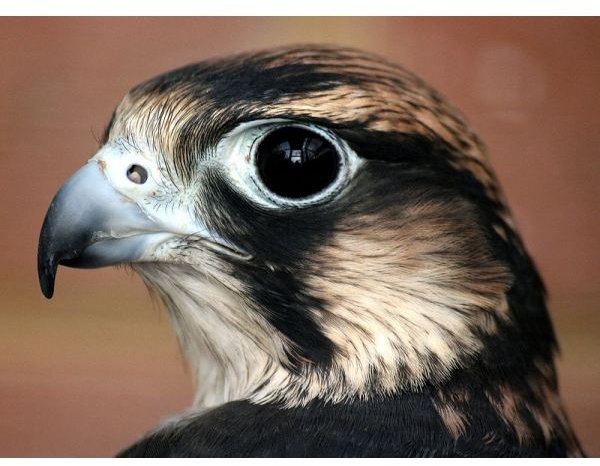About the Peregrine Falcon: Description & Facts on These Amazing Birds
The Peregrine Falcon
Peregrine falcons are raptors, or bird of prey, meaning they hunt and kill animals, including other birds. The name peregrine comes from the Latin word peregrinus, meaning “to wander”. This name suits them well because they can migrate over great distances. Some are known to travel as many as 15,500 miles in one year. These beautiful birds can be found living on all continents but Antarctica and on many oceanic islands. They are also the fastest flying birds in the world. Their average travel speed is 25-34 mph. However, they can reach speeds up to 69 mph in direct pursuit of prey and up to 200 mph as they dive toward their prey. Below are more interesting peregrine falcon facts.
Description
The length of peregrine falcons is 15 to 21 inches and the weight is about 2 pounds. The males are slightly smaller than the females. Adults have dark brown backs, a yellowish brown underside with brown spots, hooked beaks, and sharp hooked claws.
Habitat

Peregrines prefer wide-open spaces and tall cliffs for nesting. They thrive near coasts but they can be found just about everywhere, including the tropics, deserts, the tundra, and even in major cities on bridges and skyscrapers.
Diet
These falcons search for prey from above, either while flying or perching. Sometimes they will catch their prey by diving toward it and striking it with their feet or they will pursue it from behind. To kill the prey, they will bite into its neck. Their diet consists mostly of birds, including songbirds, ducks, and small geese. They also eat bats and other small mammals.
Reproduction

These wonderful birds mate for life and will breed in the same place each year. Mating season takes place in late March through May. The gestation period lasts 29 to 32 days and the clutch size can be 2 to 5 eggs. Both females and males incubate the eggs. The chicks, called eyases, start flying in about 42 days although they still depend on their parents.
Conservation
Peregrine falcons were endangered species in the U.S. during the mid-20th century. The use of DDT (and DDE - a breakdown product of DDT) was primarily responsible for the rapid decline. The pesticide would cause the eggshells to thin which would cause them to break while being incubated. Fortunately, these falcons are no longer considered endangered since the ban on DDT in the 1970s. Captive breeding programs also played a big role in increasing numbers.
More Information
The following are more interesting peregrine falcon facts:
• These birds have few natural predators. Occasionally, golden eagles or great-horned owls will kill the young.
• For thousands of years, people have trained falcons to hunt.
• The life span of peregrines in the wild is up to 17 years.
References
National Geographic: Peregrine Falcon - https://animals.nationalgeographic.com/animals/birds/peregrine-falcon/
Defenders of Wildlife: Peregrine Falcon - https://www.defenders.org/wildlife_and_habitat/wildlife/peregrine_falcon.php
Photo Credit
Peregrine Falcon image cc by Keven Law on Flickr
Peregrine Falcon Flying image cc by Kevin Cole on Wikipedia
Peregrine Falcon Baby image cc by the Pennsylvania Game Commission on Wikimedia
